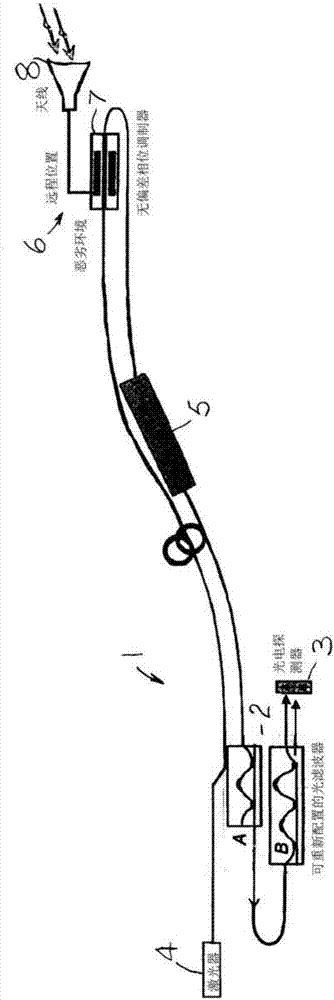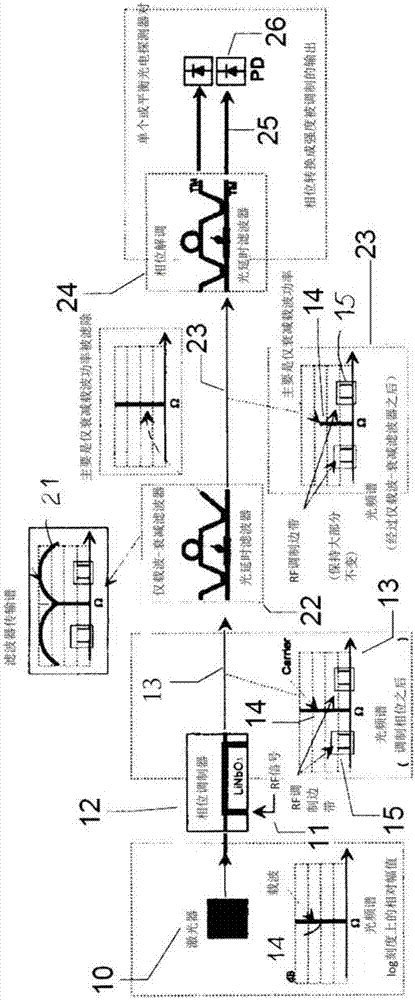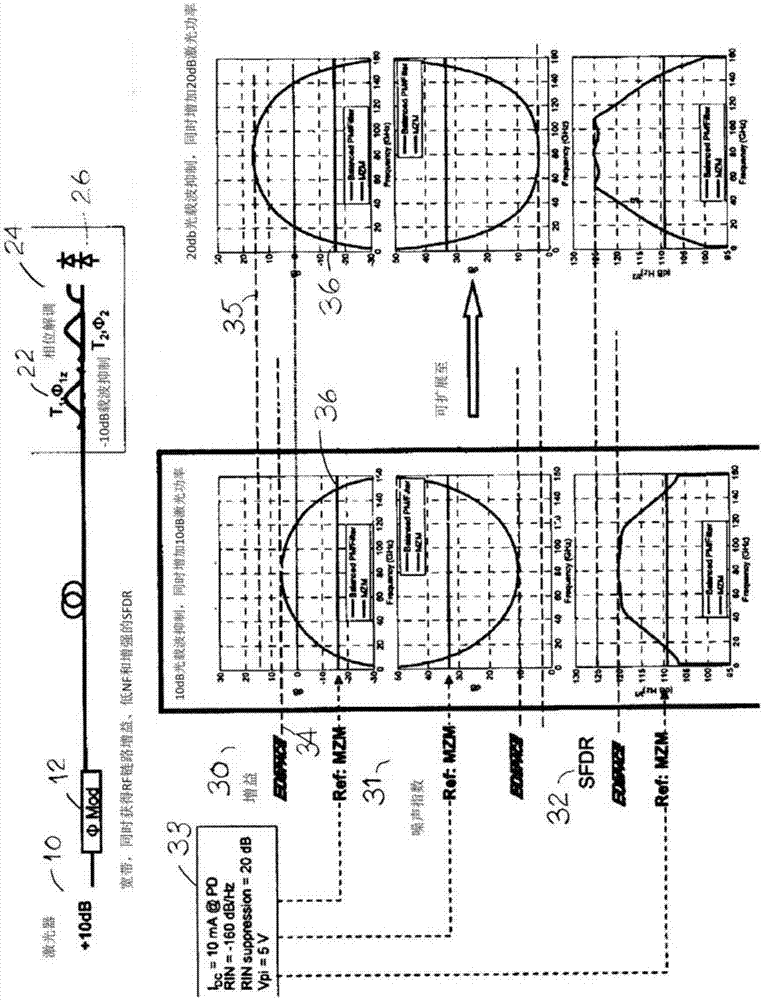High-RF-frequency analog fiber-optic links using optical signal processing
A kind of optical signal and signal technology, applied in optical fiber transmission, optical fiber radio, electrical components, etc., can solve the problems of high noise index, low dynamic range, limitation, etc., and achieve the effect of advanced implementation scheme and improvement, high performance level
- Summary
- Abstract
- Description
- Claims
- Application Information
AI Technical Summary
Problems solved by technology
Method used
Image
Examples
Embodiment Construction
[0043] Such as figure 1 As shown, the basic filter system 1 has two reconfigurable optical filters 2 connected in series. The first filter A is reconfigured to attenuate primarily only the optical power of the carrier by a certain amount, with minimal impact on the modulation sideband signal. The optical frequency transmission spectrum of the first filter is set to be symmetrical with respect to the optical carrier in the optical frequency domain. To minimize attenuation of the signal being modulated, the period of the delay line filter should be set to maximize the transmission of the modulation sideband frequencies. In general, many other optical filters can also be used for this task, including narrowband Fabry-Perot, fiber Bragg gratings, etc., which attenuate only the carrier signal power.
[0044] The second filter B is used to demodulate the phase modulated signal and provide the result to the balanced photodetector 3 . A high power laser source 4 provides laser carr...
PUM
 Login to View More
Login to View More Abstract
Description
Claims
Application Information
 Login to View More
Login to View More - R&D
- Intellectual Property
- Life Sciences
- Materials
- Tech Scout
- Unparalleled Data Quality
- Higher Quality Content
- 60% Fewer Hallucinations
Browse by: Latest US Patents, China's latest patents, Technical Efficacy Thesaurus, Application Domain, Technology Topic, Popular Technical Reports.
© 2025 PatSnap. All rights reserved.Legal|Privacy policy|Modern Slavery Act Transparency Statement|Sitemap|About US| Contact US: help@patsnap.com



